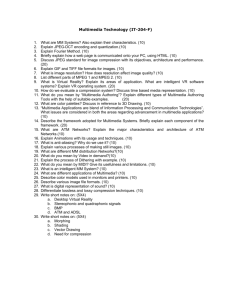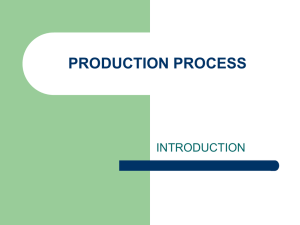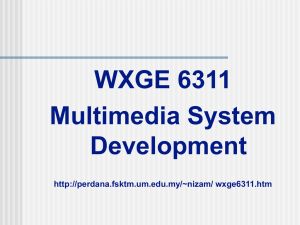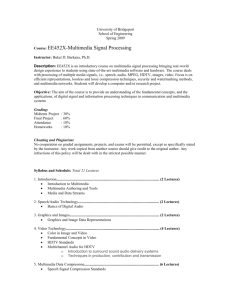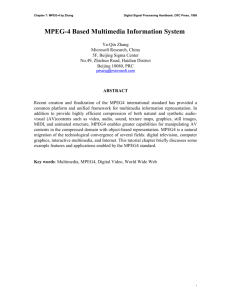Journal Article
advertisement
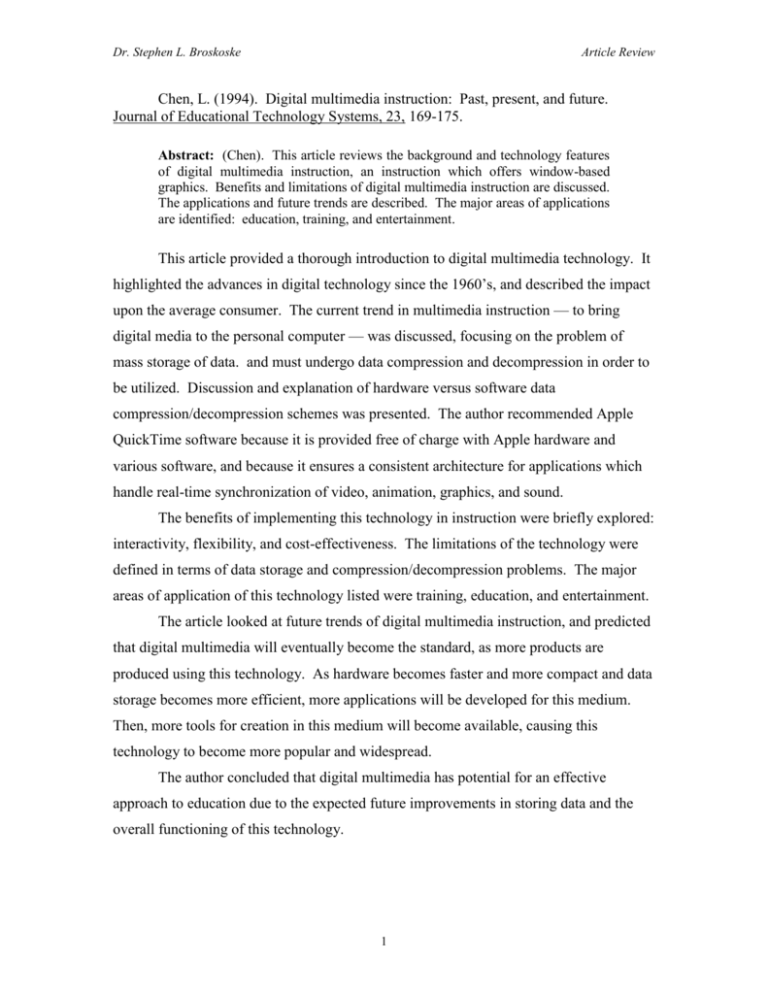
Dr. Stephen L. Broskoske Article Review Chen, L. (1994). Digital multimedia instruction: Past, present, and future. Journal of Educational Technology Systems, 23, 169-175. Abstract: (Chen). This article reviews the background and technology features of digital multimedia instruction, an instruction which offers window-based graphics. Benefits and limitations of digital multimedia instruction are discussed. The applications and future trends are described. The major areas of applications are identified: education, training, and entertainment. This article provided a thorough introduction to digital multimedia technology. It highlighted the advances in digital technology since the 1960’s, and described the impact upon the average consumer. The current trend in multimedia instruction — to bring digital media to the personal computer — was discussed, focusing on the problem of mass storage of data. and must undergo data compression and decompression in order to be utilized. Discussion and explanation of hardware versus software data compression/decompression schemes was presented. The author recommended Apple QuickTime software because it is provided free of charge with Apple hardware and various software, and because it ensures a consistent architecture for applications which handle real-time synchronization of video, animation, graphics, and sound. The benefits of implementing this technology in instruction were briefly explored: interactivity, flexibility, and cost-effectiveness. The limitations of the technology were defined in terms of data storage and compression/decompression problems. The major areas of application of this technology listed were training, education, and entertainment. The article looked at future trends of digital multimedia instruction, and predicted that digital multimedia will eventually become the standard, as more products are produced using this technology. As hardware becomes faster and more compact and data storage becomes more efficient, more applications will be developed for this medium. Then, more tools for creation in this medium will become available, causing this technology to become more popular and widespread. The author concluded that digital multimedia has potential for an effective approach to education due to the expected future improvements in storing data and the overall functioning of this technology. 1 Dr. Stephen L. Broskoske Article Review Evaluation/Reaction/Commentary: This article provides a good introduction to digital multimedia instruction, grounded in a historical framework with consideration of current and future trends, and gave the reader an appreciation of the tremendous storage requirements of this type of media. The remainder of the article then focused primarily on the data storage issues of compression and decompression. I feel that this article focused too heavily on one technical issue regarding digital multimedia instruction: data compression, decompression, and storage. When comparing the benefits of this technology, the author discussed the effectiveness of instruction using this technology compared only with other computerbased instruction. The author assumes that digital multimedia instruction is a valid and desired instructional media, and will become more popular as technologic advances and availability allow the media to be accessible. His assumption is probably correct, but the work could have been more scholarly and more convincing if the author backed up this assumptions with research. While examining the limitations of this technology, the author focused solely on the data compression/decompression issue. Other issues such as multimedia production cost, instructor willingness to implement, instructor prerequisite programming experience, perceptions of school administration or community, and other factors might be valid issues as well. The author concluded that digital multimedia technology will become increasingly more popular as hardware prices become more affordable and thus more accessible to the general public. While this assumption is correct, hopefully more research will be performed to demonstrate the effectiveness of this medium in instruction, and not just assume to utilize a new medium of learning because it is popularly employed in the entertainment industry. 2
